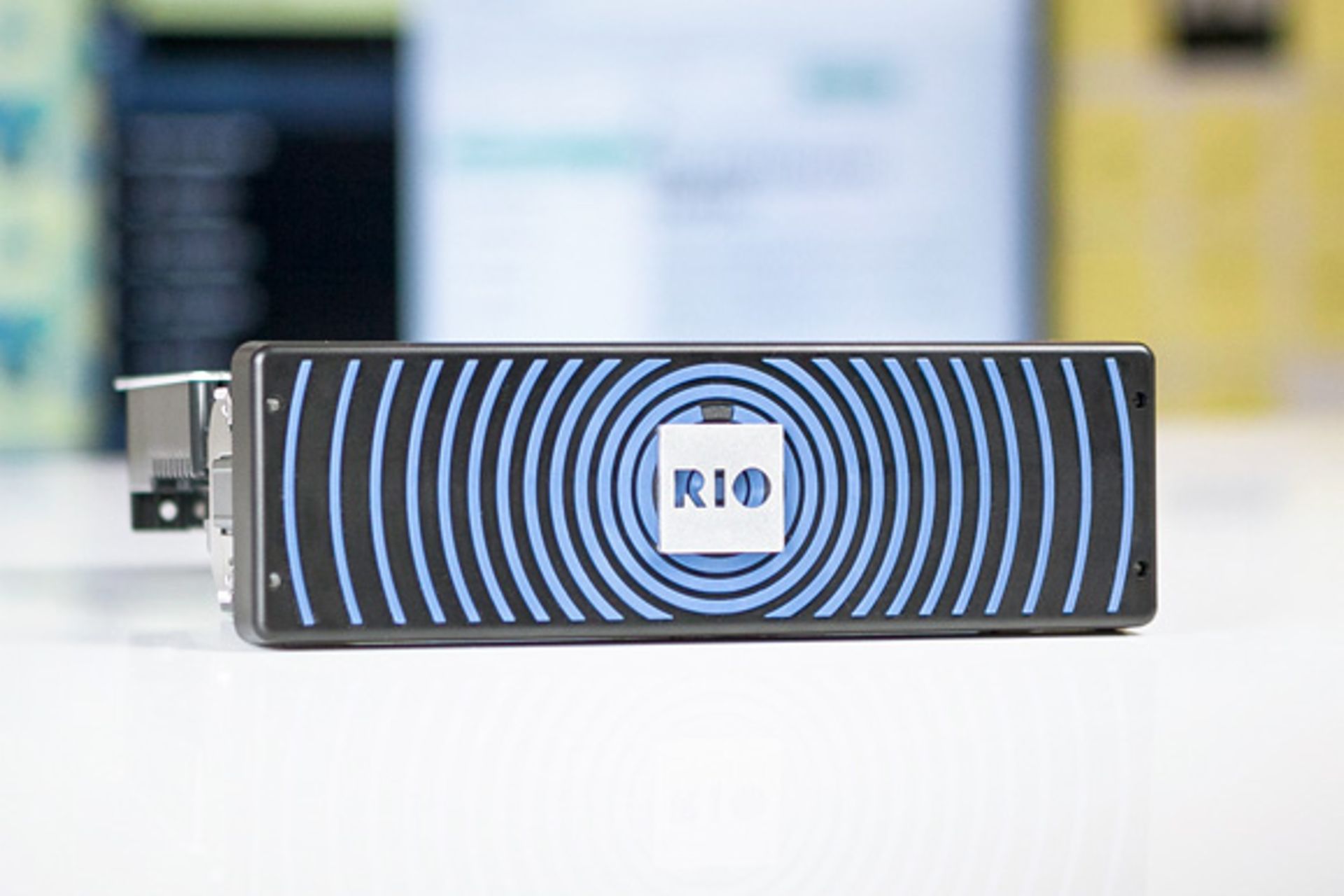The digital transformation will fundamentally reshape transportation and logistics. As the sector embraces this new era of digitization and data-driven fleet management, key questions come to the forefront. What does the connected truck market entail? How can digitalization benefit trucking operations?
This page explores the different facets of connected trucks. It examines current advancements in the field and considers how digital technologies enable modern trucks to deliver valuable insights through data analytics to optimize efficiency, safety, and compliance.
Digital technologies transforming the logistics industry
Today, physical networks of roads work together with digital networks: The cloud, the Internet of Things (IoT), artificial intelligence (AI), and connected tools are radically reshaping how businesses operate. This presents tremendous opportunities for them to introduce new business models, get the edge over the competition, and deliver efficiencies.
Innovations in logistics, transport, supply chains, and fleet management are reshaping the language of the industry. From back offices to boardrooms, terms and acronyms such as ELD devices (electronic logging devices), electronic logging compliance, Logistics 4.0, digitization, telematics, and Industry 4.0 are now commonplace.
The implementation of innovative services is made significantly easier by central electrical/electronic architecture. E/E architecture, which can be seen in MAN Trucks, is the convergence of electronics, software and wiring into one integrated system.
The benefits of digitalization:
-
Every minute counts in the freight industry, and connected trucks improve transport time and reduce costs. Digital services can be used to simplify repetitive and time-consuming tasks, leaving transport company staff with more time for their core duties.
-
Digital add-on programs enable the driver to concentrate on driving safely and efficiently. This saves time and makes the working day more pleasant.
-
Connecting makes managing maintenance easier. Data-based remote diagnosis allows technical problems to be reported directly, so that service teams can react immediately.
-
Today’s trucks need to be future-proof and ready to be fitted out for the demands of the future without any complications. E/E solutions ensure that trucks are open to new functions and updates.
-
Thanks to agile approaches brought about by simpler, faster digital services, customers can be brought into the development process and provide their feedback on new products and services.
What are the key elements of digitalization in relation to trucks?
The digital transformation means modern truck fleets are equipped with wide array of technologies and sophisticated systems that work in unison to enable seamless data transfer and communication. Connected trucks leverage the power of the internet and data analytics to enhance their capabilities. This allows them to collect and transmit crucial information such as location, driving patterns, and vehicle conditions. This vital connectivity empowers vehicles to interact with the outside world. GPS tools and other sensors aid the tracking of position, speed, direction, and destination.

Telematics systems serve as the backbone of connected trucks. They collect data from various sources and transmit it wirelessly to the cloud for analysis. These systems integrate with GPS tracking and sensors, as well as input from the telematics box, which retrieves data from the controller area network (CAN bus) or fleet management system interface. Fleet managers access this data remotely via online portals and mobile apps, enabling them to make informed decisions in real-time. Additional hardware components such as cameras, RFID tags, and Bluetooth devices expand the scope of data collection. Evolving cellular networks, including 5G systems, ensure high-speed, low-latency connectivity.
What is ADAS?
The contribution that advanced driver assistance systems, or ADAS technologies, make to road safety cannot be overstated. The concept of ADAS is straightforward: Human error is the cause of almost all road accidents. The role of ADAS features is twofold: to prevent injuries and fatalities by reducing the number of road accidents and to mitigate the impact of those that occur.
Typical applications found in ADAS-equipped vehicles:
- Lane Keeping Assist warns the driver if the vehicle is drifting out of its lane and can automatically steer it back to the center of the lane.
- Adaptive Cruise Control maintains a safe distance from the vehicle in front and adjusts the speed according to the traffic situation.
- Emergency Brake Assist detects potential collisions with other vehicles or pedestrians and applies the brakes automatically if the driver does not react in time.
- Blind Spot Detection alerts the driver of other vehicles or objects in the truck’s blind spots and can prevent lane changes if there is a risk of collision.
- Collision Warning detects potential collisions with other vehicles or pedestrians and alerts the driver or autonomously applies the brakes if they do not react in time.
Moreover, digitalization enhances safety features in trucks, protecting both the driver and other road users. Cameras, radars, LiDAR, and other sensors detect obstacles, traffic signs, lane markings, and other vehicles, activating is data can be to activating Advanced Driver Assistance Systems (ADAS) and sending alerts in case of unauthorized access or freight theft.
These technologies also contribute to compliance with road safety and transportation regulations. This data can help fleet owners ensure adherence to rules, completion of necessary paperwork, and undertaking necessary safety checks. Furthermore, it ensures that consignments adhere to specific conditions or temperature ranges during transportation, maintaining product integrity.
In addition to safety and compliance, digitalization streamlines logistics management and contributes to a more efficient transportation ecosystem. Cloud computing, predictive analytics, and the Internet of Things (IoT) facilitate enhanced logistics planning, route optimization, and predictive maintenance. AI and machine learning algorithms extract actionable insights from the wealth of data collected, enabling fleet managers to make data-driven decisions and improve operational efficiency. Over-the-air software updates ensure that trucks remain up to date with the latest features and security patches. This ensures optimal performance and compliance with evolving regulations.
Furthermore, with the current ELD rule, having telematics-based connectivity in place will make it easier for fleet managers to meet electronic reporting requirements rather than relying on paper logs
How truck connectivity enhances logistics
As the lifeblood of our economy, truck connectivity has immense potential to streamline supply chain operations. Leveraging the rich data from connected vehicles, logistics managers can better monitor freight conditions such as temperature and humidity. This helps ensure the integrity of goods across complex supply chains. The transparency afforded by real-time tracking not only enhances visibility into shipment progress, but also fosters trust and accountability among stakeholders, ensuring timely deliveries and minimizing uncertainties.

Through real-time tracking, connected trucks facilitate the optimization of delivery schedules and truck utilization. This is bolstered by traffic alerts that further enhance on-time performance. This heightened transparency enables precise monitoring and management of delivery timelines, mitigating delays and improving overall efficiency. In-cab navigation systems and messaging platforms improve productivity. At the same time, they enhance communication and collaboration between drivers, dispatchers, and customers, ensuring smoother operations and reducing miscommunications.
Furthermore, proactive maintenance scheduling based on real-time diagnostics and predictive analytics minimizes the risk of unexpected breakdowns and disruptions to delivery schedules. This ensures the reliability of fleet operations and optimizes the allocation of resources. The integration of connectivity technologies extends its influence beyond the vehicle itself, enabling improved planning at logistics hubs and warehouses. Fleet managers can optimize loading and unloading times through enhanced visibility into processes, ensuring smoother operations and reduced bottlenecks.
Overall, these interconnected factors pave the way for data-driven decision-making, unlocking new levels of efficiency within the logistics ecosystem.
The importance of digitalization for the future of electromobility
As well as providing modern, connected trucks and buses, today’s transport companies must also offer digital services that go beyond the vehicle to make customers’ daily work easier, more efficient, safer, and more comfortable.
Understanding their customers and the challenges they face is paramount for these companies, rather than solely concentrating on the vehicle on the road. This encompasses various processes, including in loading and unloading, fueling and charging, and fleet management, as well as checking driver duty status. Through a comprehensive evaluation of a customer's value chain, organizations can identify areas for optimizing the total cost of transportation.
Digitalization is poised to play a critical role in the realm of e-mobility by providing vital support to businesses as they transition towards a cleaner and more efficient transportation ecosystem. Through the implementation of advanced battery management systems and intelligent route planning solutions, digital technologies will optimize the performance of electric vehicles, enhance charging infrastructure, and elevate the overall user experience.
An overview of the connected truck market
The market research and advisory company Mordor Intelligence valued the connected truck market at USD 20.94 billion in 2023 and projects it to reach USD 53.72 billion in the next five years. One of the reasons for this marked growth is that supply chains and fleet management processes are being digitalized.
The increased adoption of technologies that enable remote supervision and operation of transportation alongside solutions such as ADAS, telematics, electronic logging devices (ELD systems), Wi-Fi-based vehicle-to-vehicle communication (V2V), adaptive cruise control (ACC), lane departure assist (LDA), and active brake assist (ABA) are revolutionizing the logistics sector, ensuring its resilience and fitness for the future.
Fundamentally, the digital transformation of the transport and logistics industry enables huge gains in driver safety, compliance, maintenance, and more. Value creation counts among the most compelling opportunities; connected trucks can enable new business models, services, and partnerships shaped by data analytics and insights.
RIO, the digital service entity of the TRATON GROUP, is working to make the world of transportation more efficient and transparent. The company bundles services for the entire supply chain via an open, vendor-independent cloud-based platform for the entire transport and logistics industry. Through data-driven intelligence, RIO connects all links in real-time to ensure a more efficient and sustainable future for the world’s growing freight traffic.
Find out more about connectivity and digitalization across the TRATON GROUP at Scania, MAN, International and Volkswagen Truck & Bus.


